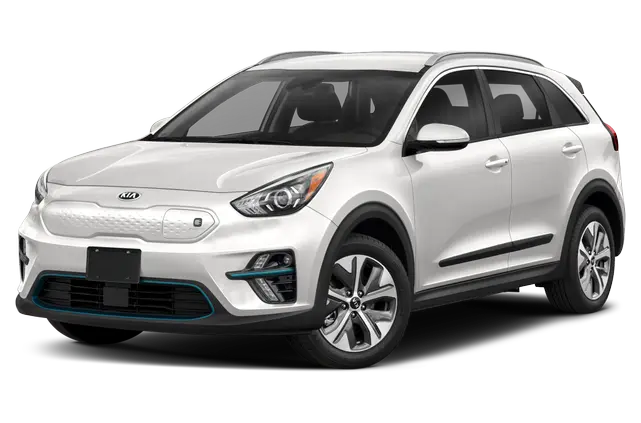Get ready if you’re in the market for a new car because tariffs are the main factor driving up car prices. The U.S. government implemented a 25% tariff on all imported cars on April 2, 2025, and starting on May 3, it imposed a 25% tariff on imported auto parts. The announcement by former President Donald Trump aims to increase domestic production and generate $100 billion for the US auto industry.
Dealers, automakers, and consumers are already experiencing the repercussions. Here’s what you should know about the impact of auto tariffs on some of the most well-known American automobiles and what the situation means for your upcoming auto purchase.
Why are tariffs important, and what are they?
By raising the cost of foreign-built automobiles, these tariffs aim to deter American automakers from producing as many cars domestically. Theoretically, this protects American industry and jobs. In reality, though, it’s more complicated.
Even American-made automobiles frequently use parts from Mexico, Canada, Germany, Japan, or South Korea. The outcome? Price increases that affect almost everything on the lot, not just imported vehicles.
According to analysts, the price of a car made in the United States may increase by about $3,000, while the price of a car made in Canada or Mexico may increase by $6,000 or more. For models that are fully imported, You might have to pay an extra $12,000.
The Impact on the Most Popular Automobiles
The following summarizes the potential effects of the new tariff regime on popular cars, trucks, and SUVs:
The Ford Maverick
Due to its assembly in Mexico, this small truck will be subject to the full 25% tariff. Once praised for its reasonable price, it may soon become too expensive for many first-time purchasers.
The Chevrolet Blazer
The Blazer, which is also manufactured in Mexico, is anticipated to see a sharp price increase unless GM alters its production plan or reduces profit margins.
The Toyota Prius
Another car specifically targeted by the tariffs is the Prius, which is imported from Japan. Toyota might think about moving production or charging customers more.
The Nissan Sentra
The Sentra, manufactured in Mexico, is well-liked by consumers on a tight budget. The 25% tariff may make it less affordable and cause consumers to seek alternatives.
Hyundai Venue
The Venue, which is made in South Korea, will likewise be subject to the full impact of the tariff, which is expected to raise prices in a market that is already overflowing with options.
The Volkswagen Jetta
Volkswagen’s Mexico-built Jetta will likely see a significant price increase if it doesn’t alter its pricing or sourcing strategy.
The Porsche 911
Due to its import status, this German-built luxury sports car will have a higher sticker price, making it even more exclusive.
The Toyota Camry
The Camry, which is assembled in Kentucky and contains roughly 70% North American components, might still see slight price increases if some of its components are imported.
The Ford F-Series
Missouri and Michigan, home to the nation’s best-selling truck line, are not exempt. It will now cost more if it has any imported chips, suspension parts, or transmissions.
GMC Sierra and Chevrolet Silverado
These pickups, which are assembled in both Mexican and American facilities, will vary based on the production location and trim level.
The BMW X5
Germany sources many parts, but South Carolina manufactures some X5s. Price increases and partial tariff exposure are likely to follow.
Automaker Reaction: Take It All in or Give It Away?
Now, manufacturers must decide whether to absorb the costs or pass them on to the consumer. If manufacturers absorb the tariffs, their profits may suffer. Giving them away could drive customers to rival businesses or away from the market completely.
To source more parts domestically, some automakers are looking into changing their supply chains, but the process requires investment, time, and retooling. Others might completely ban imports of specific models, which would leave customers with fewer options.
What You Should Know About This
1. Purchase Now, Not Later
Many consumers are making purchases more quickly as price increases are imminent. It might make sense to purchase an automobile now if it is manufactured or even partially assembled abroad.
2. Examine alternative assemblies in the United States.
The price of cars with more domestic content might increase more gradually. Seek vehicles that are built in the United States and contain a significant proportion of parts from the United States or Canada.
3. Monitor the secondhand market closely.
Pre-owned prices may rise as a result of a spike in demand for used cars brought on by rising new car prices. It’s already happening: since early March, used listings have significantly increased, particularly for well-liked compact and mid-size models.
4. Be prepared for delays and fewer options.
Until they discover solutions, automakers might reduce their imports of lower-margin models or postpone new models. Don’t rely on a particular trim or package being easily accessible if you have a preference.
The More Comprehensive View
The purpose of these tariffs was to safeguard American manufacturing. However, the truth is that very few cars are actually made entirely in the United States in a world where auto supply chains span the entire planet.
Even American-made automobiles use engine parts from Mexico, electronics from Korea, or transmissions from Japan. As a result, these tariffs have a wide-ranging and occasionally unpredictable impact.
Due in large part to affordability concerns, industry analysts predict that new car sales will decline from 16 million annually to between 14.5 and 15 million in the near future.






